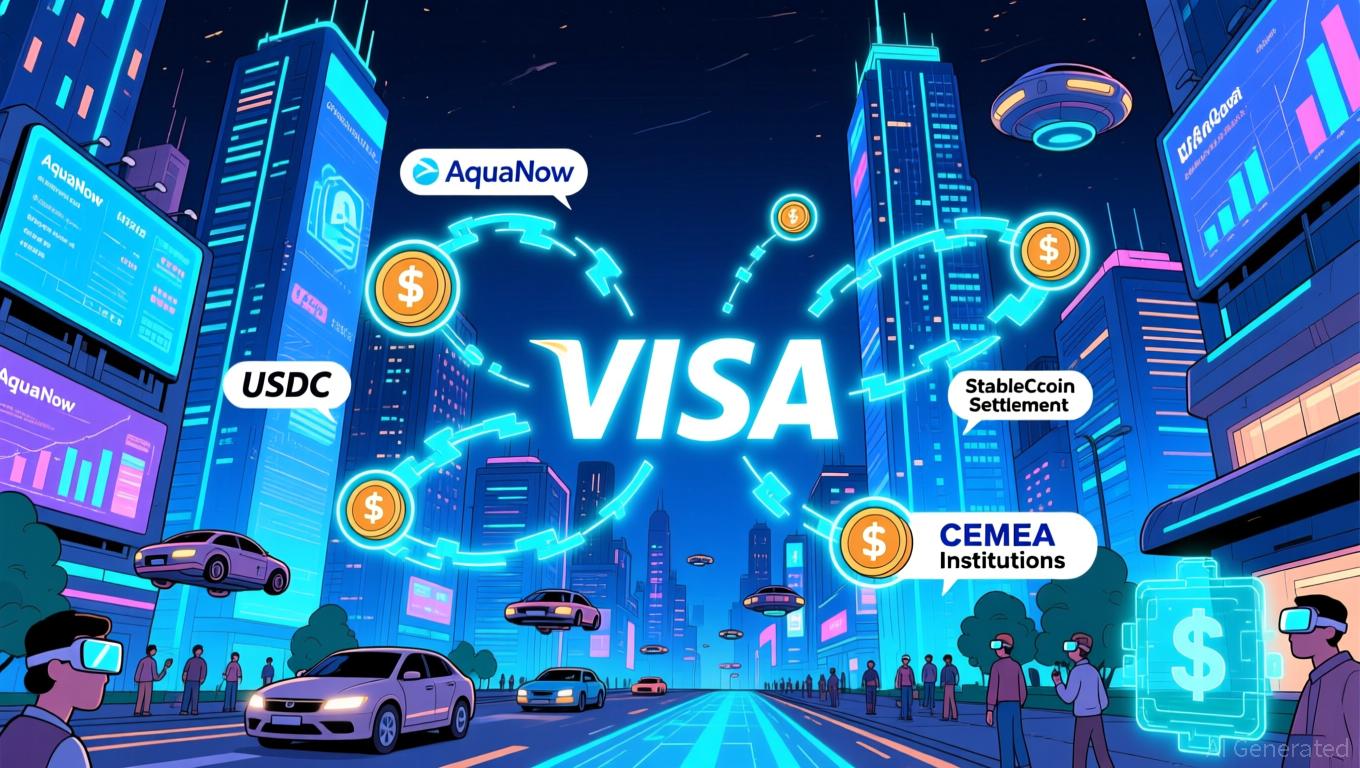Visa and AquaNow Upgrade Payment Infrastructure through Stablecoin Integration
- Visa partners with AquaNow to expand stablecoin settlement in CEMEA via USDC , aiming to cut costs and settlement times. - The initiative builds on a $2.5B annualized pilot program, leveraging stablecoins to modernize payment infrastructure. - Visa's multicoin strategy aligns with industry trends, as regulators and competitors like Mastercard also explore stablecoin integration. - Regulatory progress in Canada and risks like volatility highlight evolving opportunities and challenges in digital asset adop
Visa Inc. (NYSE: V) has broadened its stablecoin settlement services across Central and Eastern Europe, the Middle East, and Africa (CEMEA) by joining forces with AquaNow, a digital asset platform focused on liquidity and infrastructure. This partnership brings together AquaNow’s technology and Visa’s global payments network, allowing financial institutions to complete settlements using approved stablecoins such as
This collaboration builds on Visa’s 2023 pilot, which enabled clients to settle in USDC. Since its launch, the program has reached an annualized transaction volume of $2.5 billion. Godfrey Sullivan, Visa’s Head of Product and Solutions for CEMEA, noted that this marks progress in updating the “back-end rails of payments,” reducing dependence on legacy systems and equipping institutions for the future of money transfers

Visa’s overall approach involves supporting a range of stablecoins and blockchains within its settlement platform. Rubail Birwadker, Visa’s Global Head of Growth Products and Strategic Partnerships, highlighted the company’s aim to build a “multicoin and multichain foundation” to meet the needs of partners worldwide. This strategy was echoed during Visa’s Q3 2025 earnings call, where CEO Ryan McInerney spoke about the rising demand for stablecoins in cross-border payments and the significance of
This partnership also mirrors a broader industry movement, with major firms like Mastercard exploring stablecoin adoption. AquaNow’s experience in Canadian crypto infrastructure, especially its work connecting trading platforms to global markets, makes it a pivotal player in this transition.
Regulatory progress further highlights the sector’s momentum. For example, Canada’s QCAD Digital Trust has recently secured approval for a compliant Canadian dollar stablecoin, reflecting a more mature regulatory environment for digital assets
With stablecoins expected to transform global payments, Visa’s latest expansion underscores its dedication to innovation. The company’s infrastructure now accommodates more than 25 fiat currencies worldwide, strengthening its leadership in digital money movement. As Sullivan remarked, the partnership with AquaNow is a “key step” in redefining how institutions engage with the changing financial landscape
Disclaimer: The content of this article solely reflects the author's opinion and does not represent the platform in any capacity. This article is not intended to serve as a reference for making investment decisions.
You may also like
Bitcoin, Ethereum on the Rise as Gold Price Signals Midterm Weakness

XRP News: Ripple’s RLUSD Becomes Officially Recognised in Abu Dhabi
UK FCA Allows Firms to Test Stablecoins in the Real UK Market
Solana News Update: DWF Allocates $75M to Develop Advanced DeFi Infrastructure for the Future
- DWF Labs launches $75M fund to boost institutional DeFi adoption, targeting dark-pool DEXs, money markets, and yield products across Ethereum , Solana , and Base. - DeFi TVL surged 72% YoY to $127B as Solana's ETF inflows ($380M in 3 weeks) outpace Ethereum, driven by its high throughput and low fees. - Canada's QCAD stablecoin approval and DWF-BTQ quantum security partnership highlight regulatory progress, with DeFi's institutional potential growing despite 2021 TVL peak unmet. - Solana's Firedancer upg
